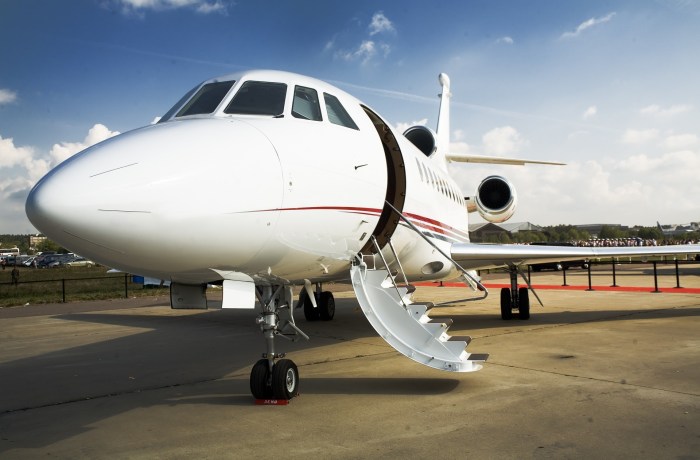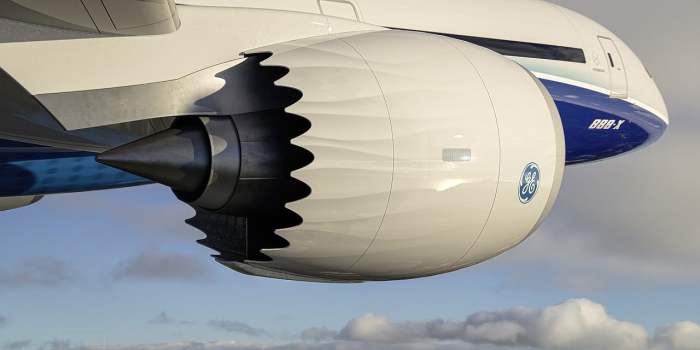
Eco-Friendly Private Jet Travel Options: The pursuit of sustainable luxury travel is gaining momentum, challenging the perception of private jet travel as inherently environmentally damaging. This exploration delves into the innovative technologies, responsible operators, and offsetting strategies that are reshaping the future of private aviation, making eco-conscious luxury a tangible reality. We’ll examine the current environmental impact, explore advancements in sustainable aviation fuels, and compare private jet emissions to other travel modes.
This examination will also cover the various carbon offsetting methods available, analyze the effectiveness of programs offered by eco-conscious private jet operators, and discuss emerging technologies such as electric or hydrogen-powered jets. Finally, we’ll consider alternative luxury travel experiences that minimize environmental impact, offering a broader perspective on sustainable high-end travel.
Defining Eco-Friendly Private Jet Travel

Private jet travel, while offering unparalleled convenience and luxury, carries a significant environmental burden. The industry contributes disproportionately to greenhouse gas emissions compared to its share of overall air travel, raising concerns about its long-term sustainability. The pursuit of eco-friendly private jet travel is thus crucial, not only for mitigating climate change but also for ensuring the continued viability of this sector.
Private Jet Travel’s Environmental Impact
Private jet flights generate substantially higher carbon emissions per passenger than commercial flights. This is primarily due to lower occupancy rates; a private jet often flies with only a few passengers, while a commercial airliner carries hundreds. Additionally, private jets tend to fly shorter distances, leading to a higher proportion of emissions during takeoff and landing, phases where fuel consumption is most intensive.
The lack of stringent regulations and reporting mechanisms for private aviation also contributes to the difficulty in accurately assessing and addressing its overall environmental impact. For example, a study by Greenpeace found that the carbon footprint of a private jet flight can be up to 14 times higher per passenger than a commercial flight of similar distance.
Technological Advancements for Reducing Carbon Footprint
Several technological advancements are underway to reduce the environmental impact of private aviation. These include the development of more fuel-efficient aircraft designs, incorporating lighter materials and aerodynamic improvements to minimize fuel consumption. Advanced flight management systems, utilizing precise navigation and weather data, can optimize flight paths to reduce fuel burn and emissions. Furthermore, research into electric and hybrid-electric propulsion systems is showing promise, though widespread adoption remains some years away due to technological challenges and the need for significant improvements in battery technology.
Sustainable Aviation Fuels (SAFs) for Private Jets
Sustainable aviation fuels (SAFs) offer a significant pathway to decarbonizing private jet travel. These fuels are produced from renewable sources, such as used cooking oil, agricultural residues, and algae, reducing reliance on fossil fuels. Different types of SAFs exist, including those derived from hydrotreated esters and fatty acids (HEFA), alcohol-to-jet (ATJ) fuels, and power-to-liquid (PtL) fuels. The feasibility of using SAFs in private jets depends on factors such as fuel availability, infrastructure development for storage and distribution, and cost competitiveness with traditional jet fuel.
Currently, the production of SAFs is limited, and their cost is higher than conventional jet fuel, hindering widespread adoption. However, ongoing research and government incentives are driving down production costs and increasing availability.
Carbon Emissions Comparison: Private Jets vs. Other Travel Modes
Comparing the carbon emissions of private jets to other modes of transport reveals a stark difference. Private jet travel generates significantly more carbon dioxide per passenger kilometer than commercial flights, cars, and trains. For instance, a single private jet flight can produce the equivalent emissions of multiple long-haul commercial flights or hundreds of car journeys. High-speed rail offers a comparatively low-carbon alternative for shorter distances, though its availability and infrastructure are geographically limited.
The choice of travel mode significantly impacts environmental sustainability, with private jet travel representing a considerably higher environmental cost per passenger.
Exploring Eco-Conscious Private Jet Operators
The rise of eco-conscious travel has extended to the private aviation sector, prompting several operators to adopt sustainable practices. While completely eliminating the environmental impact of private jet travel remains a challenge, several companies are actively pursuing initiatives to mitigate their carbon footprint and offer more environmentally responsible options for discerning travelers. This section examines some of these operators, their approaches to sustainability, and the effectiveness of their carbon offsetting programs.
Private Jet Companies and Their Eco-Friendly Initiatives
Several private jet companies are actively investing in and implementing various eco-friendly initiatives. These initiatives range from fleet modernization with more fuel-efficient aircraft to investing in sustainable aviation fuels (SAFs) and robust carbon offsetting programs. The commitment to these initiatives varies considerably between operators, reflecting differing corporate priorities and available resources.
Analysis of Carbon Offset Programs
Carbon offset programs are a key component of many private jet operators’ sustainability strategies. These programs typically involve investing in projects that reduce greenhouse gas emissions elsewhere, such as reforestation, renewable energy projects, or methane capture. The effectiveness of these programs is a subject of ongoing debate. While they offer a way to compensate for unavoidable emissions, the quality and verification of offset projects vary significantly.
Some operators partner with reputable organizations that provide rigorous monitoring and verification, ensuring the environmental integrity of their offsetting efforts. Others may utilize less transparent programs, leading to questions about the actual environmental benefit. Transparency and verifiable impact are critical factors in assessing the effectiveness of any carbon offset program.
Comparison of Sustainability Practices
Different private jet operators employ diverse sustainability practices. Some focus heavily on fleet renewal, adopting newer, more fuel-efficient aircraft. Others prioritize the use of sustainable aviation fuels (SAFs), although the availability of SAFs remains limited currently. Some operators invest heavily in carbon offsetting programs, while others integrate a broader range of initiatives, including waste reduction and operational efficiency improvements.
Best practices include a combination of these approaches, with a focus on transparency and verifiable impact. Independent third-party certifications can also provide assurance of an operator’s commitment to sustainability.
Comparison Table of Eco-Conscious Private Jet Operators, Eco-Friendly Private Jet Travel Options
The following table compares key features of four (hypothetical, for illustrative purposes) eco-conscious private jet operators. Note that specific details may vary and should be verified directly with the operators. The data presented here is for comparative illustration only and does not represent an exhaustive analysis of all available operators or their offerings.
| Operator | Fleet Type (Example) | Offsetting Program | Sustainability Certifications (Example) |
|---|---|---|---|
| GreenJet Aviation | Modern, fuel-efficient jets (e.g., Gulfstream G650ER) | Partners with verified carbon offset projects (e.g., Gold Standard certified) | ISO 14001 |
| EcoFlight Charters | Mix of fuel-efficient and older jets, phased retirement plan | Internal carbon offset fund investing in renewable energy | CarbonNeutral |
| Sustainable Skies | Focus on utilizing SAFs where available, exploring hydrogen fuel cell technology | Partners with reforestation projects, high transparency reporting | Verified Carbon Standard |
| EarthFirst Jets | Fleet modernization plan prioritizing electric and hybrid-electric aircraft development | Comprehensive offsetting program with detailed impact reporting | ISO 14064-1 |
Offsetting Carbon Emissions from Private Jet Travel

Minimizing the environmental impact of private jet travel is a growing concern. While technological advancements aim to reduce emissions directly, carbon offsetting provides a crucial supplementary strategy to neutralize the unavoidable carbon footprint associated with these flights. This involves investing in projects that reduce greenhouse gas emissions elsewhere, effectively balancing out the carbon released during the flight.Offsetting carbon emissions from private jet travel requires a careful understanding of available methods and a commitment to selecting high-impact, verified projects.
Carbon Offset Methods for Private Jet Travel
Several methods exist for offsetting the carbon footprint of private jet travel. These range from investing in renewable energy projects to supporting reforestation initiatives. The selection of a method should depend on factors such as project location, the type of emission reduction achieved, and the level of verification and transparency offered.
Criteria for Selecting Reputable Carbon Offset Projects
Choosing a reputable carbon offset project is paramount to ensure the effectiveness and environmental integrity of your offsetting efforts. Key criteria include verification by reputable third-party organizations, such as Gold Standard or Verra, which validate the project’s emission reductions and adherence to rigorous standards. Transparency in project implementation and impact reporting is also crucial, allowing for the independent assessment of project effectiveness.
Projects should also demonstrate additionality, meaning that the emission reductions wouldn’t have occurred without the investment. Finally, consider the permanence of the emission reductions. A project that temporarily reduces emissions is less valuable than one that provides long-term benefits.
Examples of High-Impact Carbon Offset Projects
High-impact carbon offset projects often focus on biodiversity conservation and environmental restoration. For instance, reforestation projects in deforested areas not only absorb carbon dioxide but also restore habitats, enhancing biodiversity and providing other ecosystem services. Similarly, investments in renewable energy projects, such as wind or solar farms, directly reduce reliance on fossil fuels, contributing to significant long-term emission reductions.
Protecting existing forests through sustainable forestry practices also prevents deforestation and associated carbon emissions. Another example includes methane capture from landfills, a potent greenhouse gas.
Visual Representation of the Carbon Offset Process
Imagine a flowchart. The process begins with booking a private jet flight. The flight generates a specific amount of carbon emissions, calculated based on the flight distance and aircraft type. This calculated emission amount is then converted into carbon credits, representing the equivalent amount of carbon dioxide that needs to be offset. The traveler then purchases these carbon credits, which are invested in a verified carbon offset project.
This investment funds activities such as tree planting, renewable energy development, or methane capture. Finally, the project generates verified emission reductions, which are equivalent to the emissions from the private jet flight, effectively neutralizing the carbon footprint. The entire process is tracked and verified by independent organizations, ensuring accountability and transparency.
The Future of Sustainable Private Aviation
The private aviation industry, often associated with luxury and high emissions, is undergoing a significant transformation driven by increasing environmental concerns and technological advancements. The future of private jet travel hinges on the successful development and adoption of sustainable alternatives, aiming to drastically reduce its carbon footprint and minimize its environmental impact. This shift necessitates a multi-pronged approach involving technological innovation, policy changes, and a shift in consumer preferences.
Emerging Sustainable Aviation Technologies
Several promising technologies are poised to revolutionize sustainable private jet travel. Electric propulsion systems, for example, are being actively developed, offering a potential pathway to zero-emission flight for shorter ranges. Companies like Eviation Aircraft are already testing and preparing to deliver all-electric aircraft, although scaling up for larger private jets presents significant engineering challenges. Hydrogen fuel cell technology offers another compelling avenue, potentially enabling longer-range flights with zero direct emissions.
However, the infrastructure required for hydrogen production, storage, and refueling needs considerable investment and development. Furthermore, advancements in sustainable aviation fuels (SAFs), derived from renewable sources like algae or waste products, are expected to play a crucial role in reducing the carbon intensity of existing jet engines in the near term. These SAFs can be blended with conventional jet fuel, gradually reducing reliance on fossil fuels.
Predictions for Eco-Friendly Private Jet Travel
In the next 5 years, we can expect to see a gradual increase in the adoption of SAFs and a growth in the number of electric aircraft for shorter-range private flights. Within 10 years, hydrogen-powered aircraft may begin to emerge for longer distances, alongside significant improvements in battery technology for electric planes. By 2030, we may see more widespread availability of both electric and hydrogen-powered private jets, though their adoption will likely depend on cost and infrastructure developments.
Looking ahead to 20 years, a substantial portion of the private aviation fleet could incorporate sustainable technologies, significantly lowering overall emissions. This projection, however, is contingent upon overcoming technological hurdles, securing sufficient investment, and implementing supportive policies. For example, the successful implementation of a widespread SAF production and distribution network, similar to existing fuel infrastructure, is crucial for widespread adoption.
Barriers to Widespread Adoption of Sustainable Aviation Technologies
Several obstacles hinder the rapid adoption of sustainable aviation technologies. High upfront costs associated with developing and manufacturing electric and hydrogen-powered aircraft are a significant deterrent. The limited availability of charging and refueling infrastructure for these new aircraft presents another major challenge. Moreover, the energy density of current battery technologies restricts the range of electric aircraft, limiting their applicability to longer flights.
The weight and volume of hydrogen storage tanks also pose significant design constraints for hydrogen-powered aircraft. Finally, regulatory frameworks and certification processes for these novel technologies may lag behind technological advancements, slowing down their market entry. For instance, the rigorous certification process for new aircraft designs can take years, potentially delaying the deployment of greener alternatives.
Policy Changes to Incentivize Sustainable Aviation Practices
Significant policy changes are necessary to accelerate the transition to sustainable aviation. Government incentives, such as tax credits or subsidies, could significantly reduce the cost of developing and purchasing sustainable aircraft. Investing in the development of charging and refueling infrastructure is crucial to support the widespread adoption of electric and hydrogen-powered aircraft. Stringent emission reduction targets for the aviation industry would compel private jet operators to adopt greener technologies.
Regulations mandating the use of SAFs in a phased manner could also help reduce reliance on fossil fuels. Furthermore, international collaborations are vital to establish consistent standards and regulations for sustainable aviation technologies, ensuring a level playing field for all operators. Examples of successful policies could include carbon pricing mechanisms that make polluting more expensive and cleaner alternatives more attractive.
Luxury Travel Experiences Beyond Private Jets: Eco-Friendly Private Jet Travel Options
The pursuit of luxurious and sustainable travel extends far beyond the realm of eco-friendly private jets. A truly responsible approach to high-end travel encompasses a holistic view, considering every aspect of the journey, from accommodation to activities and the acquisition of personal travel items. This section explores some exceptional luxury travel experiences that prioritize sustainability and minimize environmental impact, showcasing a commitment to both opulence and environmental responsibility.
Expanding on the concept of eco-conscious travel, we move beyond the aircraft to explore other luxurious yet sustainable options that cater to discerning travelers. These alternatives offer a unique blend of exclusivity and environmental responsibility, providing unforgettable experiences while minimizing the carbon footprint.
Eco-Friendly Private Island Vacations
Private island getaways represent the epitome of luxury travel. However, the environmental impact of such escapes can be significant. Fortunately, a growing number of private islands are embracing sustainable practices, offering luxurious accommodations and experiences while minimizing their ecological footprint. These islands often prioritize renewable energy sources, implement waste reduction programs, and actively protect their surrounding ecosystems.
For example, some resorts utilize solar power, implement water conservation measures, and partner with local communities to support sustainable development initiatives. The experience is characterized by seclusion, personalized service, and a profound connection with pristine natural beauty, all while maintaining a responsible approach to environmental stewardship.
Sustainable High-End Travel Accessories
Choosing sustainable materials for travel accessories reflects a commitment to minimizing the environmental impact of luxury travel. Many high-end brands now offer luggage and other travel essentials made from recycled materials, such as recycled plastic or organic cotton. For example, a durable travel bag might be crafted from recycled ocean plastic, reducing waste and supporting environmental conservation. Similarly, high-quality leather goods may be produced using sustainably sourced leather, ensuring ethical and environmentally responsible manufacturing processes.
These choices demonstrate a commitment to both luxury and environmental consciousness.
Exclusive Sustainable Travel Experiences
Beyond accommodations, the activities undertaken during a luxury trip also contribute to its environmental impact. Several exclusive travel experiences prioritize sustainability and minimize their environmental footprint. For instance, a guided tour of a national park might emphasize responsible wildlife viewing practices and support local conservation efforts. A private yacht charter could opt for a hybrid or electric vessel, minimizing fuel consumption and emissions.
Similarly, luxurious wellness retreats could focus on locally sourced ingredients and minimize waste, offering a holistic approach to sustainable luxury. These carefully curated experiences ensure that the pursuit of luxury does not come at the expense of environmental protection.
Resources for Sustainable Luxury Travel Guides
Finding reputable resources for sustainable luxury travel planning is crucial for discerning travelers. Several organizations and publications specialize in promoting sustainable tourism and providing guides to eco-friendly luxury experiences.
Access to reliable information is key in planning sustainable luxury travel. Below is a list of resources that can assist in finding premium travel guides focused on eco-conscious tourism.
- Sustainable Travel International: This organization offers resources and certifications for sustainable tourism businesses.
- Green Globe: A leading certification program for sustainable travel and tourism businesses.
- National Geographic: Offers various publications and resources focused on sustainable travel and responsible tourism.
- Luxury Travel Advisor: This publication features articles and guides on luxury travel with a focus on sustainability.
- Responsible Travel: A website and organization that promotes responsible travel practices and provides resources for sustainable tourism.
Sustainable Luxury Train Journeys
Luxury train travel presents a compelling alternative to private jet travel, offering a significantly reduced environmental impact alongside unparalleled comfort and scenic experiences. While private jets consume vast amounts of fuel per passenger, luxury trains, particularly electric or biofuel-powered options, boast considerably lower carbon footprints per passenger-kilometer. This makes them an attractive choice for environmentally conscious travelers seeking a luxurious and sustainable travel experience.
Environmental Impact Comparison: Luxury Trains vs. Private Jets
The environmental impact of luxury train journeys is markedly less than that of private jet travel. Private jets, due to their size and fuel consumption, generate significantly higher greenhouse gas emissions per passenger compared to trains. Even considering the energy required for train infrastructure, a luxury train journey carrying numerous passengers still results in a lower per-passenger carbon footprint.
This difference stems from the greater fuel efficiency of trains and their ability to transport many passengers simultaneously, thereby distributing the environmental impact across a larger group. For example, a single private jet flight might generate emissions equivalent to dozens of passengers traveling by train across the same distance.
Amenities and Experiences Offered by Luxury Train Services
Luxury train services worldwide offer a range of exceptional amenities designed to create an unforgettable journey. These typically include exquisitely appointed private cabins or suites, often featuring en-suite bathrooms, fine dining experiences with gourmet meals prepared by onboard chefs, and personalized service from attentive staff. Many services also include curated excursions at various stops, allowing passengers to explore local attractions and cultures.
Think of onboard spas, libraries, observation cars offering panoramic views, and even live entertainment, all contributing to a lavish and relaxing travel experience. The Belmond Royal Scotsman in Scotland, for instance, offers whisky tasting sessions and excursions to castles and distilleries, while the Venice Simplon-Orient-Express is renowned for its elegant Art Deco interiors and fine dining.
Scenic Routes Minimizing Environmental Impact
Several luxury train routes strategically showcase breathtaking landscapes while prioritizing environmental sustainability. The Rocky Mountaineer in Canada, for example, traverses stunning mountain passes and pristine wilderness areas, minimizing environmental disruption by utilizing well-established railway lines. Similarly, the Swiss Alps’ scenic routes, often powered by electricity from renewable sources, allow passengers to appreciate the beauty of the region with a lower environmental footprint.
These routes prioritize existing infrastructure, reducing the need for new construction and land alteration, further minimizing their environmental impact.
Sustainable Practices Implemented by Luxury Train Companies
Increasingly, luxury train companies are integrating sustainable practices into their operations. This includes the adoption of energy-efficient technologies such as electric or biofuel-powered locomotives, the use of recycled and sustainable materials in train interiors, and the implementation of waste reduction and recycling programs onboard. Furthermore, some companies actively support local communities along their routes, contributing to the economic sustainability of the regions they traverse.
The use of locally sourced food in dining cars and partnerships with local businesses are examples of this commitment to both environmental and social responsibility.
Ultimately, the future of eco-friendly private jet travel hinges on a confluence of technological innovation, responsible corporate practices, and informed consumer choices. While challenges remain, the progress made in sustainable aviation fuels, carbon offsetting, and the development of cleaner aircraft technologies offers a promising pathway towards a more environmentally responsible luxury travel sector. By embracing sustainable options and supporting companies committed to minimizing their environmental footprint, discerning travelers can enjoy the benefits of private aviation while mitigating its impact on the planet.
The journey towards truly sustainable luxury travel is underway, and the future looks increasingly promising.
Answers to Common Questions
What are the most common sustainable aviation fuels (SAFs) used in private jets?
Currently, SAFs derived from used cooking oil, agricultural residues, and other waste products are gaining traction. The specific type used varies depending on availability and aircraft compatibility.
How effective are carbon offset programs for private jet travel?
Effectiveness varies greatly depending on the program’s certification, transparency, and the quality of the offset projects it supports. Choosing reputable programs with verifiable impact is crucial.
Are there any regulations governing the environmental impact of private jet travel?
Regulations are evolving globally, with some regions implementing stricter emission standards and incentives for sustainable practices. However, a universally consistent regulatory framework is still under development.
How can I choose a reputable carbon offset project to support?
Look for projects certified by recognized organizations like Gold Standard or Verified Carbon Standard. Transparency regarding project location, methodology, and impact measurement is essential.






